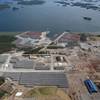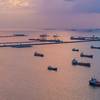Imagine the following scenario: It is in the middle of winter in the north Atlantic, freezing cold with rough seas, when an emergency onboard a tanker requires the crew to abandon the ship. A lifeboat with its full complement of persons is just getting away from the emergency scene when the engine suddenly stops working.
Fortunately, the scenario described above is fictitious - but it could very well have been real. Although most ship operators and vessels have procedures to manage and monitor fuel quality, the fuel used solely for emergency equipment such as emergency generators, emergency fire pumps and lifesaving appliances can easily slip under the radar.
The introduction of stricter regulatory requirements concerning air pollution from ships also adds to the equation and makes the onboard fuel management process even more complex.
All vessels must carry out regular testing of their emergency equipment, and most have routines and systems well in place to achieve this. However, Gard experiences that even where established routines for testing of emergency equipment are followed, there can be little or no attention paid to the fuel used for this equipment.
Fuel test providers also report that they receive very few samples for testing from the storage tanks of emergency equipment, and that test results indicate that the fuel is often not fit for its intended use.
As stricter regulatory requirements for marine fuels are introduced in emission control areas (ECA) and local ports as well as globally (e.g. MARPOL Annex VI), demands are also changing within the refinery industry.
Necessary changes in the refinery process and an increased use of additives or “fuel improvers” can have a detrimental effect on both cold flow properties and the long-term storage of distillate fuels, both of which are essential for the safe operation of emergency equipment.
In order to prevent emergency equipment failing in a real emergency, Gard strongly recommends Members and clients undertake the following preventive measures:
Fuel purchasers should carefully consider seasons and operational patterns, and specify fuel with the appropriate cold flow properties when ordering distillates. DMX fuel grade is strongly recommended.
Fuel for emergency equipment should be sampled and tested both when delivered, and at regular intervals thereafter, at least two times per year.
As most fuel distillates deteriorate over time (except DMX fuel grade), operators should have a system in place for managing fuel for emergency equipment, including the life span of the fuel.
Prolonged test runs under load should be carried out at regular intervals, and exchange intervals for emergency equipment fuel stored in storage tanks should be considered.
The need for awareness and fuel management training amongst relevant crew and purchasers should be considered.










